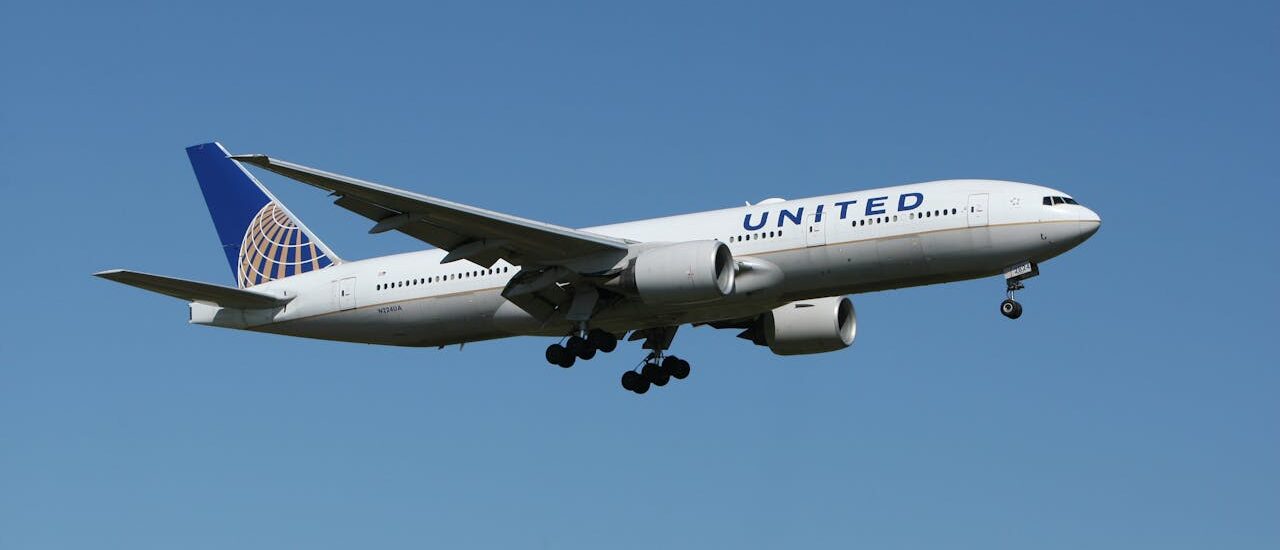An emergency diversion is a rare event, but when it happens, it captures everyone’s attention. Recently, United Airlines Flight UA770 had to divert from its planned route due to an urgent issue. Understanding how airlines handle such situations is vital for travelers. Knowing what happens behind the scenes can ease fears and prepare passengers for any unexpected events. Emergency diversions impact everyone involved — passengers, crew, and airline operations — making it a critical part of aviation safety.
Background of United Airlines Flight UA770
Flight route and typical operations
United Airlines Flight UA770 usually flies from Denver International Airport in Colorado to Maui, Hawaii. The aircraft assigned is often a Boeing 737 or similar model suited for long domestic routes. The crew includes experienced pilots and cabin staff trained for emergencies. Regular flights like UA770 are known for smooth service, with thousands of passengers crossing the skies every week.
Summary of the incident timeline
The diversion happened unexpectedly one morning, catching travelers off guard. According to reports, the flight was nearing its destination when the crew noticed a serious issue — likely a technical problem or an onboard emergency. The pilot contacted air traffic control to request an immediate diversion. Media outlets quickly picked up the story, highlighting the quick response of the airline’s crew. The aircraft safely diverted to a nearby airport, with passengers disembarking under careful supervision.
Common Causes of Emergency Diversion on Commercial Flights
Medical emergencies onboard
Few situations are as distressing as a medical emergency at 35,000 feet. Passengers can suddenly fall ill due to heart attacks, strokes, or severe allergic reactions. When medical issues threaten a passenger’s life, pilots often choose to divert to the nearest airport to get them proper help. Such emergencies demand swift decisions to save lives.
Mechanical and technical issues
Aircraft are complex machines, and occasional malfunctions happen. These issues may involve engine failure, electrical system glitches, or avionics malfunctions. When pilots spot serious technical problems, safety always comes first. Airlines assess risks carefully before continuing the flight or diverting to an airport with better maintenance support.
Weather-related emergencies
Weather can turn a smooth flight into a dangerous situation fast. Severe thunderstorms, turbulence, or even sudden natural hazards force pilots to reroute or divert. Sometimes, flying through bad weather risks passenger safety and comfort. When conditions worsen unexpectedly, pilots prioritize choosing a safe airport away from the storm.
Security threats or suspicious activities
In today’s world, security threats weigh heavily on airline decisions. Suspicious persons or items onboard can trigger immediate emergency responses. Airlines follow strict protocols to evacuate or divert flights if they suspect a security danger. This swift response prevents widespread harm and keeps everyone safe.
Response Procedures During an Emergency Diversion
Crew responsibilities and communication protocols
The flight crew is the first line of action during a diversion. Pilots communicate constantly with air traffic control, providing real-time updates. Cabin crew prepare passengers for landing, explaining safety procedures clearly and calmingly. Good communication helps keep everyone focused and prepared for possible surprises.
Redirecting to the nearest suitable airport
Choosing where to divert isn’t random. Airlines consider factors like runway availability, emergency services, and nearby airports. The goal is to reach the safest, most accessible airport quickly. Once landed, the airline coordinates with local authorities for passenger support and aircraft handling.
Passenger instruction and safety measures
Clear instructions are key. Passengers are asked to stay calm, follow crew directives, and prepare for landing. If an emergency landings is needed, instructions include using seat belts, following evacuation procedures, and listening for safety announcements. Safety measures are designed to protect everyone onboard.
Impact of the UA770 Diversion on Passengers and Crew
Passenger experience and logistical disruptions
Diverted flights cause delays and may require rebooking on new flights. Passengers often face frustration, especially if travel plans change suddenly. Airlines provide accommodations or meal vouchers where necessary. Despite the inconvenience, safety always takes priority over timelines.
Crew response and operational adjustments
Crew members work tirelessly to manage passenger concerns and ensure safety. They maintain professionalism and calmness in stressful situations. The airline also adjusts schedules and routes to accommodate the diversion, which can ripple through their operations for hours or even days.
Post-Diversion Analysis and Lessons Learned
Investigation process and safety reviews
After any diversion, agencies like the FAA or NTSB step in to investigate. They analyze data, interview crew and passengers, and examine aircraft systems. The goal is to identify causes and prevent future incidents. Accidents are rare, but detailed reviews improve overall safety.
Airline safety improvements and policy updates
Airlines learn from each incident by tightening procedures and training. New technology, like advanced weather radar and better maintenance protocols, increase safety margins. Continuous improvement helps prevent similar events from happening again.
Expert Perspectives and Case Studies
Industry expert insights on emergency diversions
Aviation safety experts say quick decisions and clear communication are crucial. Diversions should be handled calmly, with enough information given to passengers. “Safety should never be compromised in an emergency,” one specialist explains.
Comparative analysis with similar recent incidents
Recent incidents, like the diverting of flights due to engine alerts or security issues, teach airlines important lessons. United Airlines and others constantly review their strategies. They invest in better technology and training to manage future emergencies better.
Actionable Tips for Passengers on Emergency Diversions
- Stay calm and listen carefully to crew instructions.
- Pay attention during safety briefings — they prepare you for emergencies.
- Keep your travel documents and emergency contact info accessible.
- If your flight is diverted, rebook promptly and file claims as needed.
- Always remember: your safety tops everything else.
Conclusion
The case of United Airlines Flight UA770 highlights how emergencies can happen unexpectedly in aviation. Causes range from medical crises to technical problems, weather, and security threats. Responding efficiently requires teamwork, clear communication, and swift action. Passengers should stay informed and calm during these moments. Airlines continually step up their safety measures based on lessons from each incident. Your awareness and preparedness make all the difference in staying safe in the skies.
FAQ about United Airlines Flight UA770 Emergency Diversion
1. Why was United Airlines Flight UA770 diverted?
The flight was diverted due to a medical emergency, security concern, or mechanical issue requiring immediate landing.
2. How many passengers were affected by the diversion?
Most flights have around 200 to 300 passengers; the exact number depends on the specific aircraft.
3. What happens after the flight is diverted?
The plane lands at the nearest suitable airport and specialists are called to handle emergencies or issues.
4. Will I get compensation for the delay caused by the diversion?
Compensation depends on airline policies and the reason for the diversion but often includes rebooking or vouchers.
5. How can I find out why the flight was diverted?
Check your email or contact United Airlines customer service for official details about the reason.
6. Will the passengers and crew be safe during a diversion?
Yes, safety is the highest priority, and crew are trained to handle diversions carefully and efficiently.
7. What should passengers do if their flight is diverted?
Follow crew instructions, stay patient, and stay in touch with airline staff for updates.


